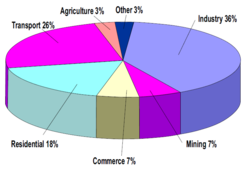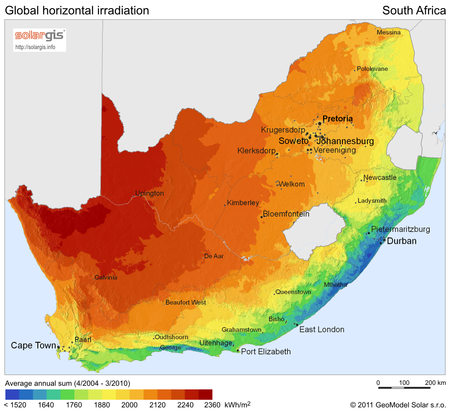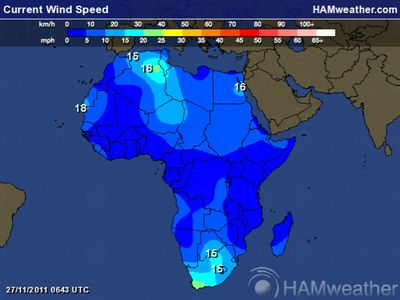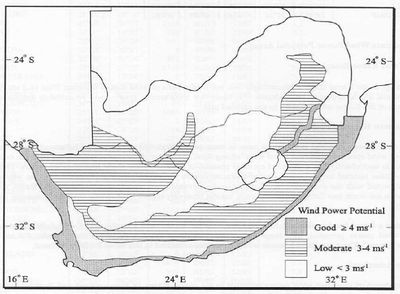Knowledge fuels change - Support energypedia!
For over 10 years, energypedia has been connecting energy experts around the world — helping them share knowledge, learn from each other, and accelerate the global energy transition.
Today, we ask for your support to keep this platform free and accessible to all.
Even a small contribution makes a big difference! If just 10–20% of our 60,000+ monthly visitors donated the equivalent of a cup of coffee — €5 — Energypedia would be fully funded for a whole year.
Is the knowledge you’ve gained through Energypedia this year worth €5 or more?
Your donation keeps the platform running, helps us create new knowledge products, and contributes directly to achieving SDG 7.
Thank you for your support, your donation, big or small, truly matters!
South Africa Energy Situation
| South Africa | |||
|---|---|---|---|
| Capital | Pretoria | ||
| Official Languages(s) |
11 Official languages with Zulu being the most spoken language | ||
| Government | Democratic Republic | ||
| President | Jacob Zuma[1] | ||
| 'Total Area '( km²) | 1211037[2] | ||
| Population | 52981991[3] | ||
| Rural Population | (year) | ||
| GDP (Nominal) | US $ 471178 Billion (2011)[4] | ||
| GDP Per Capita | US $ (year) | ||
| Currency | Rand | ||
| Time Zone | UTC/GMT +2 hours | ||
| Electricity Generation | TWh/year (year) | ||
| Access to Electricity | 75 % | ||
| Wind energy (installed capacity) | MW (year) | ||
| Solar Energy (installed capacity) | MW (year) | ||
Overview

Economy General
- 1 Euro ~ 11 south African Rand (ZAR).
- GDP ~ 3080 Billion ZAR ~ 280 Billion Euro.
- Exports amounted to 24% of GDP in 2010.
- Large and active stock exchange that ranks 17th in the world.[6]
- Active member of BRICS
- BRICS is an international political organisation of leading emerging economies with a developing middle income status and it comprises of Brazil, Russia, India, China and South Africa.
Hydropower
Till date hydropower contributes only 0.1% of the South African Energy supply.[7]
The Baseline Study on Hydropower in South Africa, an assessment conducted by the DME in 2002, indicated that specific areas in the country show significant potential for the development of all categories of hydropower in the short and medium term.
The Eastern Cape and KwaZulu-Natal are endowed with the best potential for the development of small, i.e. less than 10MW hydropower plants. The advantages and attractiveness of these plants are that they can either be standalone or in a hybrid combination with other renewable energy sources. Advantage can be derived from the association with other uses of water (water supply, irrigation, flood control, etc.), which are critical to the future economic and socio-economic development of South Africa.
The Southern African Power Pool (SAPP) allows the free trading of electricity between Southern African Development Community (SADC) member countries, providing South Africa with access to the vast hydropower potential in the countries to the north, notably the significant potential in the Congo River (Inga Falls).[8]
Solar Energy
Most areas in South Africa average more than 2 500 hours of sunshine per year, and average solar-radiation levels range between 4.5 and 6.5kWh/m2 in one day.
The southern African region, and in fact the whole of Africa, has sunshine all year round. The annual 24-hour global solar radiation average is about 220 W/m2 for South Africa, compared with about 150 W/m2 for parts of the USA, and about 100 W/m2 for Europe and the United Kingdom. This makes South Africa's local resource one of the highest in the world. [9]The South-west regions has the most potential in SOu
Market Entry Barrier
There are no particular barriers for entering the market but following Steps need to be followed for setting up a Solar Power Plant/Project:
- Application-Department of Energy(DOE) invite Potential developers to submit their application/ proposals
- Allotment -DOE with then assign a particular developer for the project after considering thier prices, proposals etc. It is a confidential process within DOE.
- PPA-The successful bidders / developer then signs Power Purchase agreement (PPA) with Eskom(South africa biggest utility).
- Land Acquisition
- EPC- The sucessful bidder/project owner/ developer then hire an Engineering, Procurement and Constrcution (EPC) company for sucessful implementation of the project.
- Commissioning- EPC handover the project to the owner after commisoning of the project and connecting it to the Grid .
Biomass
Biogas
Wind Energy
South Africa has an excellent wind resource which is dispersed geographically.
Cost of wind power already competitive with New coal and shall reach grid parity by 2016/2017[10]
Current estimates of South Africa's potential wind capacity varies greatly, from 3 GW to 70 GW.
There is political support for renewable energy in the country; the South African government has set a target of 10,000 GWh of renewable energy by 2013, produced mainly by biomass, wind, solar and small scale hydro.
However the targets set for wind energy are small. In the short term, the renewable energy plan only includes 500 MW of wind power until 2013, of which 400 MW would be commissioned from independent power producers.[11]
Geothermal Energy
Fossil Fuels
Key Problems of the Energy Sector
Policy Framework, Laws and Regulations
General Energy Policy, Energy Strategy
Important Laws and Regulations
Specific Strategies
(Biomass, Renewable Energies, Rural Electrification, Energy Access Strategy, Poverty Reduction Strategy etc.)
Institutional Set-up in the Energy Sector
Activities of Donors and Implementing Agencies
Further Information
References
- ↑ http://en.wikipedia.org/wiki/South_Africa
- ↑ http://en.wikipedia.org/wiki/South_Africa
- ↑ http://en.wikipedia.org/wiki/South_Africa
- ↑ http://data.worldbank.org/country/south-africa
- ↑ Sources: Department of Energy, South African Energy Synopsis, 2010fckLRhttp://www.energy.gov.za/files/media/explained/2010/South_African_Energy_Synopsis_2010.pdffckLR
- ↑ Sources: World Bank, http://data.worldbank.org/country/south-africafckLRUS Department of State – Background note South Africa, fckLRhttp://www.state.gov/r/pa/ei/bgn/2898.htmfckLR
- ↑ http://www.energy.gov.za/files/media/explained/2010/South_African_Energy_Synopsis_2010.pd
- ↑ http://bit.ly/18o4fqP
- ↑ http://www.energy.gov.za/files/esources/renewables/r_solar.html
- ↑ South Africa Wind power Potential by Dr. Kilian Hagemann.
- ↑ http://www.windlab.com/node/360






















